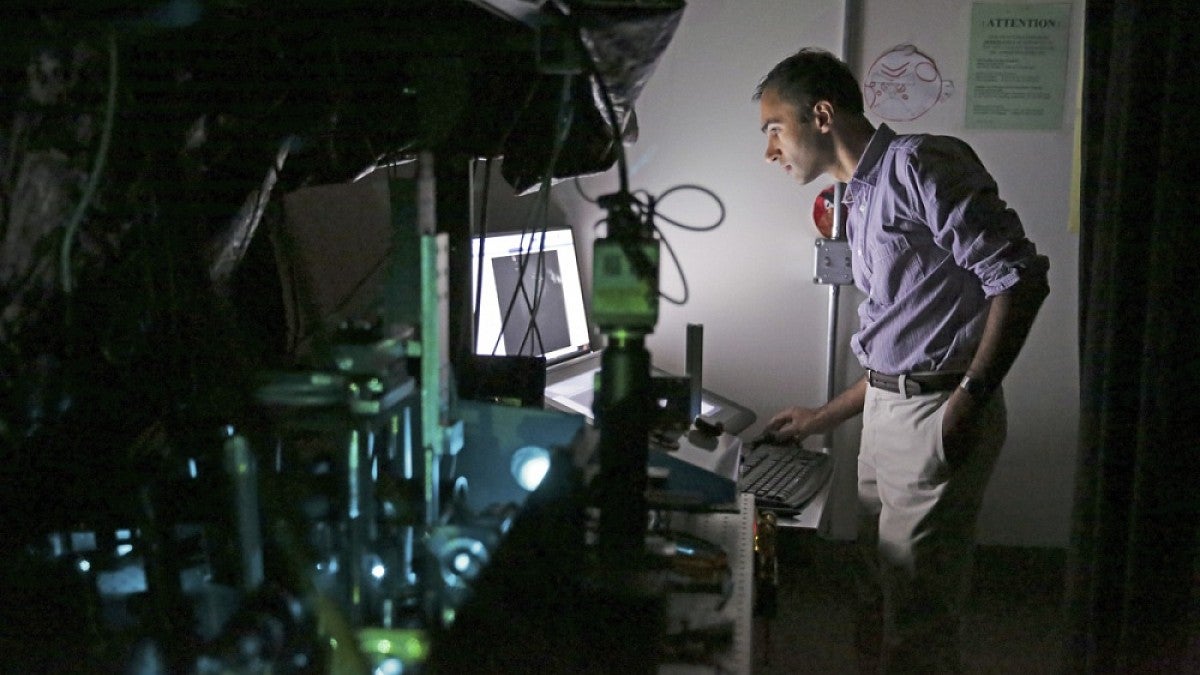Soon after exposing zebrafish to the bacterium that causes cholera, researchers saw something remarkable and unexpected. Native bacteria of the gut were rapidly flushed away.
There was a 200-percent increase in the strength of intestinal contractions, according to the research team, which included the UO’s Raghu Parthasarathy, in a paper published by the Proceedings of the National Academy of Sciences.
RELATED LINKS
The research sheds new light on how the bacterium, Vibrio cholerae, functions, said Parthasarathy, the UO’s Alec and Kay Keith Professor in Physics, whose imaging and analysis techniques played a key role.
The research eventually may point toward a better understanding of how exposure works in humans and lead to new therapies.
According to the Centers for Disease Control and Prevention, the bacterium, which reaches humans through contaminated food or water, causes more than 3 million cases of acute diarrheal illness and 100,000 deaths worldwide each year.
“Knowing the strategies by which the bacterium is able to invade the intestine can open doors to therapies that might disrupt these paths,” Parthasarathy said.
The research team of physicists, molecular biologists and microbiologists from three U.S. institutions used genetic manipulation and cutting-edge, three-dimensional microscopy to monitor what happens when the bacterium is introduced into zebrafish larvae. Zebrafish are commonly used as a model for understanding health and disease in vertebrates, including humans.
The scientists focused on a secretion system of the bacterium, which includes an appendage with a harpoon-like injection capability that transfers toxic proteins into competing healthy cells. This secretion system is found in many other bacteria, as well.
The scientists watched the behavior of these toxic microbes as they invaded zebrafish colonized with Aeromonas veronii, a native bacterial species in the zebrafish gut. They expected the native bacteria would simply be killed. Instead there were swiftly flushed out.
“The secretion system induced dramatic increases in the strength of the peristalsis process, the contractions that move gut contents down the gastrointestinal tract — much like squeezing a tube of toothpaste from the end to the top,” said study co-author Brian K. Hammer, a microbiologist at the Georgia Institute of Technology.
The researchers hypothesized that the effect on the animal’s digestive system might be driven by a particular piece of the secretion system’s machinery that binds to actin, a cellular scaffolding protein. When the actin-binding domain was deleted, the cholera-causing bacterium lost its ability to enhance contractions.
While the research team captured the impact of invasion the cholera bacterium, understanding just how it takes root in the host, such as what specific cells in the animal are targeted, is an open question, Parthasarathy said.
The research began in 2015 when Hammer, Parthasarathy and co-author Joao Xavier, a researcher at the Memorial Sloan-Kettering Cancer Center, discussed joint research possibilities during a special science-and-dialog conference, organized by the Research Corporation for Science Advancement, in Tucson, Arizona.
As a result, their labs received funding from the Gordon and Betty Moore Foundation and the Simons Foundation, to pursue their idea. The National Science Foundation, National Institutes of Health, M.J. Murdock Charitable Trust and Kavli Microbiome Ideas Challenge also supported the research.
—By Jim Barlow, University Communications


